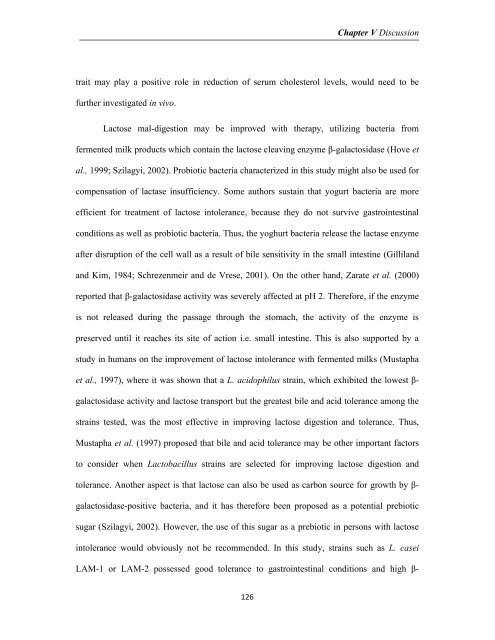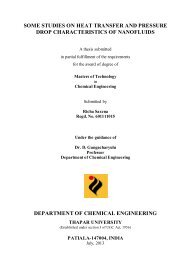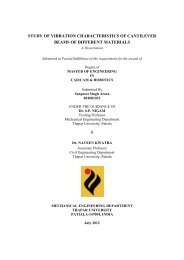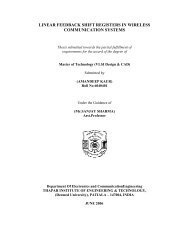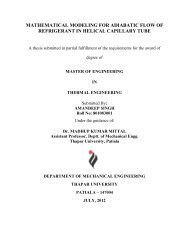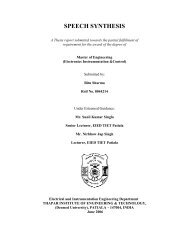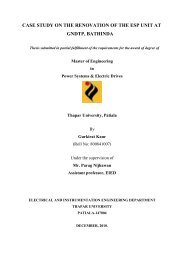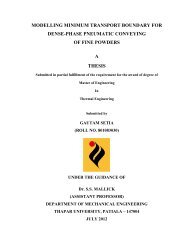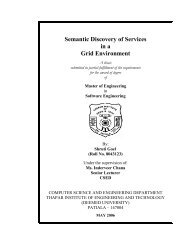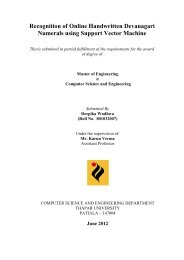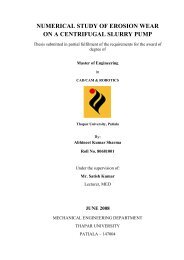from indigenous fermented foods and human gut ... - Thapar University
from indigenous fermented foods and human gut ... - Thapar University
from indigenous fermented foods and human gut ... - Thapar University
You also want an ePaper? Increase the reach of your titles
YUMPU automatically turns print PDFs into web optimized ePapers that Google loves.
126<br />
Chapter V Discussion<br />
trait may play a positive role in reduction of serum cholesterol levels, would need to be<br />
further investigated in vivo.<br />
Lactose mal-digestion may be improved with therapy, utilizing bacteria <strong>from</strong><br />
<strong>fermented</strong> milk products which contain the lactose cleaving enzyme β-galactosidase (Hove et<br />
al., 1999; Szilagyi, 2002). Probiotic bacteria characterized in this study might also be used for<br />
compensation of lactase insufficiency. Some authors sustain that yogurt bacteria are more<br />
efficient for treatment of lactose intolerance, because they do not survive gastrointestinal<br />
conditions as well as probiotic bacteria. Thus, the yoghurt bacteria release the lactase enzyme<br />
after disruption of the cell wall as a result of bile sensitivity in the small intestine (Gillil<strong>and</strong><br />
<strong>and</strong> Kim, 1984; Schrezenmeir <strong>and</strong> de Vrese, 2001). On the other h<strong>and</strong>, Zarate et al. (2000)<br />
reported that β-galactosidase activity was severely affected at pH 2. Therefore, if the enzyme<br />
is not released during the passage through the stomach, the activity of the enzyme is<br />
preserved until it reaches its site of action i.e. small intestine. This is also supported by a<br />
study in <strong>human</strong>s on the improvement of lactose intolerance with <strong>fermented</strong> milks (Mustapha<br />
et al., 1997), where it was shown that a L. acidophilus strain, which exhibited the lowest β-<br />
galactosidase activity <strong>and</strong> lactose transport but the greatest bile <strong>and</strong> acid tolerance among the<br />
strains tested, was the most effective in improving lactose digestion <strong>and</strong> tolerance. Thus,<br />
Mustapha et al. (1997) proposed that bile <strong>and</strong> acid tolerance may be other important factors<br />
to consider when Lactobacillus strains are selected for improving lactose digestion <strong>and</strong><br />
tolerance. Another aspect is that lactose can also be used as carbon source for growth by β-<br />
galactosidase-positive bacteria, <strong>and</strong> it has therefore been proposed as a potential prebiotic<br />
sugar (Szilagyi, 2002). However, the use of this sugar as a prebiotic in persons with lactose<br />
intolerance would obviously not be recommended. In this study, strains such as L. casei<br />
LAM-1 or LAM-2 possessed good tolerance to gastrointestinal conditions <strong>and</strong> high β-


